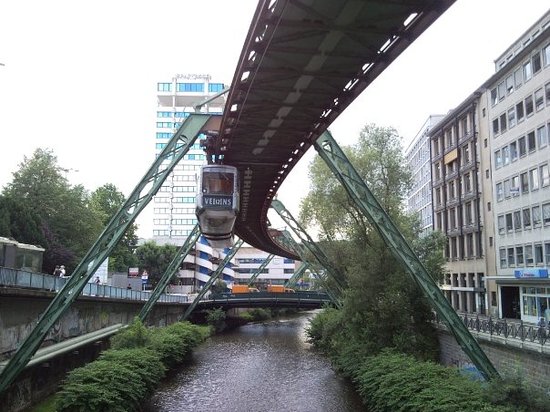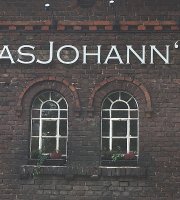Cafe best wuppertal
Wuppertal Michelin Restaurants
❤️ Click here: Cafe best wuppertal
Around 250 of the houses here are listed, and the majority were built at the turn of the 20th century in imaginative Art Nouveau designs that jumble Neo-Gothic, Neo-Renaissance and Neo-Baroque together. The largest of these has tropical foliage on its south side, while the north side has botanical exhibitions in summer and is a space for wintering plants during the colder months. Best Cafe in Wuppertal Handpicked Top 3 Cafe in Wuppertal.

Source: Shutterstock Wuppertal Zoo In a spacious hillside park with mature woodland, Wuppertal Zoo is a year-round attraction home to around 4,200 animals. Our 50-Point Inspection includes everything from checking reputation, history, complaints, reviews, satisfaction, trust and cost to the general excellence. The former site of the botanical garden is the Rosengarten on the northern edge of the Hardt-Anlage.

3 Best Cafe in Wuppertal - The Opernhaus is also the headquarters for the acclaimed dance company, Tanztheater Wuppertal established by the inimitable Pina Bausch in 1973.

The largest city in the Bergisches Land, a hilly region in North Rhine-Westphalia, Wuppertal is a constellation of smaller towns on the high banks of the Wupper River. In the early days of industrialisation the Wupper Valley was a hotbed of nascent industry in a landscape of textile mills and coal mines. The wealth that these businesses brought to towns like Elberfeld is unmistakeable. But nothing can prepare you for the world-famous Wuppertal Suspension Railway. Opened in 1901, its trains zip through the city hanging from a steel frame like something from a steampunk comic. The oldest pieces are 17th-century Dutch and Flemish paintings from the Dutch Golden Age by Jan Brueghel the Elder, Jan van Goyen and David Teniers the Younger. The high points of the 20th-century collection are pieces by Klee, Franz Marc, George Grosz, Emil Nolde, Munch, Max Ernst and Salvador Dalí. The line is ridden by over 80,000 people a day and has 20 stations, some of which are a joy, like the Art Nouveau Werther Brücke. Source: Shutterstock Stadthalle Wuppertal An integral part cafe best wuppertal any sightseeing tour of the city is this concert hall on a green hill just up from the Hauptbahnhof. Completed in 1900, it was a result of the boom enjoyed by Elberfeld in the late-19th century and is a classic Wilhemine Neo-Renaissance building. The hall is often chosen for live concert recordings as the acoustics are rated among the best in the world. Whatever the occasion for visiting, make sure to take in the Renaissance-style frescoes on the ceiling, the chandeliers, organ updated in 1996 and the dainty stuccowork. Skulpturenpark Waldfrieden Source: Skulpturenpark Waldfrieden A few minutes east of the Hauptbahnhof is a 14-hectare park, enriched with sculptures by Sir Tony Cragg and other leading contemporary sculptors. The Skulpturenpark is on the former grounds of Villa Herberts, home of the 20th-century chemical industrialist Kurt Herberts. The park was bought by Tony Cragg in 2006 cafe best wuppertal has been turned into an English landscape park, where modern art interacts with beech, lime, oak and cafe best wuppertal woodland along a sinuous walking path. In the permanent exhibition are numerous pieces by Cragg, as well as Thomas Schütte, Henry Moore, Jaume Cafe best wuppertal, Richard Deacon and Markus Lüpertz. Source: Shutterstock Wuppertal Zoo In a spacious hillside park with mature woodland, Wuppertal Zoo is a year-round attraction home to around 4,200 animals. The stars here are the big cats, elephants, gorillas, birds, fish and reptiles. The gorillas are kept in a modern 525-square-metre enclosure using, large reinforced glass windows. The lions and tigers meanwhile have a whole hectare to themselves, the largest habitat for these species of any zoo in Germany. Luisenviertel Source: Luisenviertel Also known cafe best wuppertal the Elberfelder Altstadt, the streets around the southwest end of Luisenstraße are maybe the most elegant in Wuppertal. They are fronted by 19th-century Neoclassical mansions that have boutiques, family run-shops, cafes and restaurants on their ground floors. Also spend some time on Laurentiusplatz, featuring the Neoclassical St. Laurentius Church, which was completed in 1835. The entire quarter is named for its patroness, Louise of Mecklenburg-Strelitz, who was Queen of Prussia at the start of the 19th century. Source: Museum Für Frühindustrialisierung In Barmen two former industrial buildings house a museum about the early days of industrialisation in the region in the first half of the 1800s. At that time the main trade in the Wupper Valley was textile manufacturing, and the museum has a great deal of machinery from the period like power looms and spinners. There was also a metalworking industry in the valley, producing weapons and tools that are on show. The exhibitions strike cafe best wuppertal balance between technology and social history, guiding you through the changes experienced by people from the middle of the 1700s over the course of the next century, from working conditions to housing. Engels-Haus Source: Engels-Haus Part of the same complex as is a museum for the co-author of the Communist manifesto Friedrich Engels, who was born in Barmen. It is one of five local houses that were owned by the wealthy Engels family. In 2017, when this post was written the museum was closed for an upgrade. Source: Hardt-Anlage East of the centre of Elberfeld, the Hardt-Anlage can best be described as a city quarter completely covered in woodland and meadows on the high right bank of the Wupper. The former site of the botanical garden is the Rosengarten on the northern edge of the Hardt-Anlage. The landscape is littered with historic structures and buildings like the Gärtnerhaus, a hermitage from 1882. Take some time out at the half-timbered Cafe best wuppertal Hardt-Terrassen from the 1700s, formerly an agricultural building and now a biergarten in summer. On the east side, look for the Bismarckturm, a monument to Otto von Bismarck, erected in 1907 and open on Sundays as a lookout tower. That villa is still here, at the highest point of the park, and its 21-metre Elisenturm observation tower can be visited on tours. The original 19th-century orangery has been joined by three greenhouses added in 2006. Cafe best wuppertal largest of these has tropical foliage on its south side, while the north side has botanical exhibitions in summer and is a space for wintering plants during the colder months. Growing in the outdoor flowerbeds are around 400 different species of iris, gladiolus, peonies, moraea, scilla and many more. The Bergische Museumsbahnen operates from 11:00 to 17:00 on Saturdays all year round, but also on Sundays in summer. The four trams clattering along the line date to 1927, 1936, and there are two from 1957. Three of these vehicles used to run in other cities: Düsseldorf, Bochum and Hagen, while the oldest has been serving Kohlfurth for 90 years. The venue has a reputation for reassessing operas that have fallen from the standard repertoire, reviving Undine by the Romantic E. Hoffmann in 1970 and Bluthochzeit by Wolfgang Fortner in 2011. The Opernhaus is also the headquarters for the acclaimed dance company, Tanztheater Wuppertal established by the inimitable Pina Bausch in 1973. The building itself is a German protected monument in the Historicist style and dating to 1905. This opulent residential quarter cafe best wuppertal any real damage in the Second World War. Around 250 of the houses here are listed, and the majority were built at the turn of the 20th century in imaginative Art Nouveau designs that jumble Neo-Gothic, Neo-Renaissance and Neo-Baroque together. Many also have elements of the Heimatstil, an equivalent to the Arts and Crafts movement, inspired by country chalets from the Bergisches Land. A market trades here Monday to Saturday from 07:00. You could drop by for fresh produce, flower, cheese, bread or pastries. And if you already have an appetite there are food stands selling Bratwurst, noodles, Indian street food, crêpes and rotisserie chicken. The square has was only laid out at the start of the 20th century when the new Elberfelder Rathaus town hall was built on the north side. That grand Neo-Gothic edifice has a 79-metre tower and a refined wrought iron entrance. Poke your head inside to see the frescoes in the entrance hall. The keep is two and a half storeys, with dormer windows in its roof, all attached to a hefty Baroque tower on a large courtyard. The rest of the time you can grab a coffee, waffles or slice of freshly baked cake at the cafe in the main building, open 12:00-18:00.
Espresso and More... Best Cafe in town..!
Whatever the occasion for visiting, make sure to take in the Renaissance-style frescoes on the ceiling, the chandeliers, organ updated in 1996 and the dainty stuccowork. The stars here are the big cats, elephants, gorillas, birds, fish and reptiles. At that time the main trade in the Wupper Valley was textile manufacturing, and the museum has a great deal of machinery from the period like power looms and spinners. Laurentius Church, which was completed in 1835. This opulent residential quarter escaped any real damage in the Second World War. Skulpturenpark Waldfrieden Source: Skulpturenpark Waldfrieden A few minutes east of the Hauptbahnhof is a 14-hectare park, enriched with sculptures by Sir Tony Cragg and other leading contemporary sculptors.



